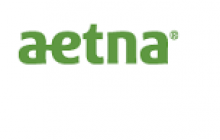How to prepare for MACRA by January 1, 2017

Big changes are ahead in how Medicare will pay physicians. The MACRA rule establishes a new Medicare physician payment program that starts January 1, 2017, yet few providers understand how this this important change will affect how they are paid.
Working with the VA to provide a longitudinal patient record
Quality Health Network (QHN), Grand Junction, Colorado works with the local VA hospital to provide VA clinicians with access to the QHN longitudinal patient record. VA providers are able to log into the QHN patient data repository to view information on care provided to Veterans in the community. In the rural area supported by QHN community providers serve many Veterans. Access to the patient record enables VA providers to have a complete picture of the veteran’s care. VA providers have made over 17,000 queries in the eight months since the VA began access the QHN portal.
Supporting a patient data repository
The Utah Health Information Network (UHIN) supports a patient data repository that integrates data across hospitals and providers. The repository includes labs, radiology, admissions, and other clinical data. UHIN anticipates adding advance directives to the repository. Via a portal, UHIN enables provider access to an integrated view of patient data across disparate sources of care.
Serving as the single point for clinical data
The Indiana Health Information Exchange (IHIE) provides a single point of collection for all clinical data provided by the supporting organizations (data providers). The INPC clinical data is normalized (standardized coding) during the storage process, allowing the data from multiple care settings compared and graphed as required in the clinical setting.
Providing image sharing services
Greater Houston Healthconnect is using the DICOM Grid Gateway connected to Healthconnect’s community health record (CHR). Healthconnect provides an image sharing service that enables providers to share medical images in a variety of ways, irrespective of their own PACS system or viewing capabilities. Authorized physicians and administrators can query and retrieve patient images and associated reports, launch studies in a clinical, zero-footprint install viewer, download studies to a local PACS, leveraging sharing functionality from one centralized location. Physicians can also send images via a secure link to any provider in any location.
Providing a Repository of Data
The Wellport HIE in a rural area of Northeast Massachusetts provides a repository of data for almost 260,000 patients. Data feeds to the repository come from labs, SureScripts, hospitals, and physician practices. Clinicians can access this data through a portal. The patient data displays in a timeline format. The clinician can click on any appointment on the timeline and open an actual progress note. The note can be attached along with others to a Direct message to themselves, the patient, or another clinician or institution. Wellport also provides a patient portal where the patient can view and send their data, update their demographics, and request appointments, prescription refills or send a message to their clinician. Over 9,600 patients have opted in to use the system. Wellport also extracts performance measures from its database for Beth Israel Deaconess Health Care affiliated physicians and relays them for analytics.
Implementing tools for providers to access patient data
The Nebraska Health Information Initiative (NeHII) has begun implementation of tools that enable providers to seamlessly access patient data in the NeHII repository from within their EHR. This single sign-on function captures user access credentials and the context of the patient record whose record the user is accessing within the EHR. This minimizes the workflow disruption for providers to access NeHII records. In the first month of implementation, 741 users adopted single sign-on and accessed almost 6,000 patient records.
Implementation of an automated care team finder
Healthshare Exchange of Southeastern Pennsylvania (HSX) has implemented an automated care team finder that allows a hospital to find the patient’s primary care doctor using a directory of Direct addresses. The automated care team finder uses the patient’s member identification with his or her healthcare insurer to identify providers involved in the patient’s recent medical care. The identified providers receive C-CDA documents with emergency department and inpatient discharge summaries using Direct Secure Messaging. HSX has sent over 70,000 discharge summaries using this method with 51 percent of these documents sent to providers across health systems.
